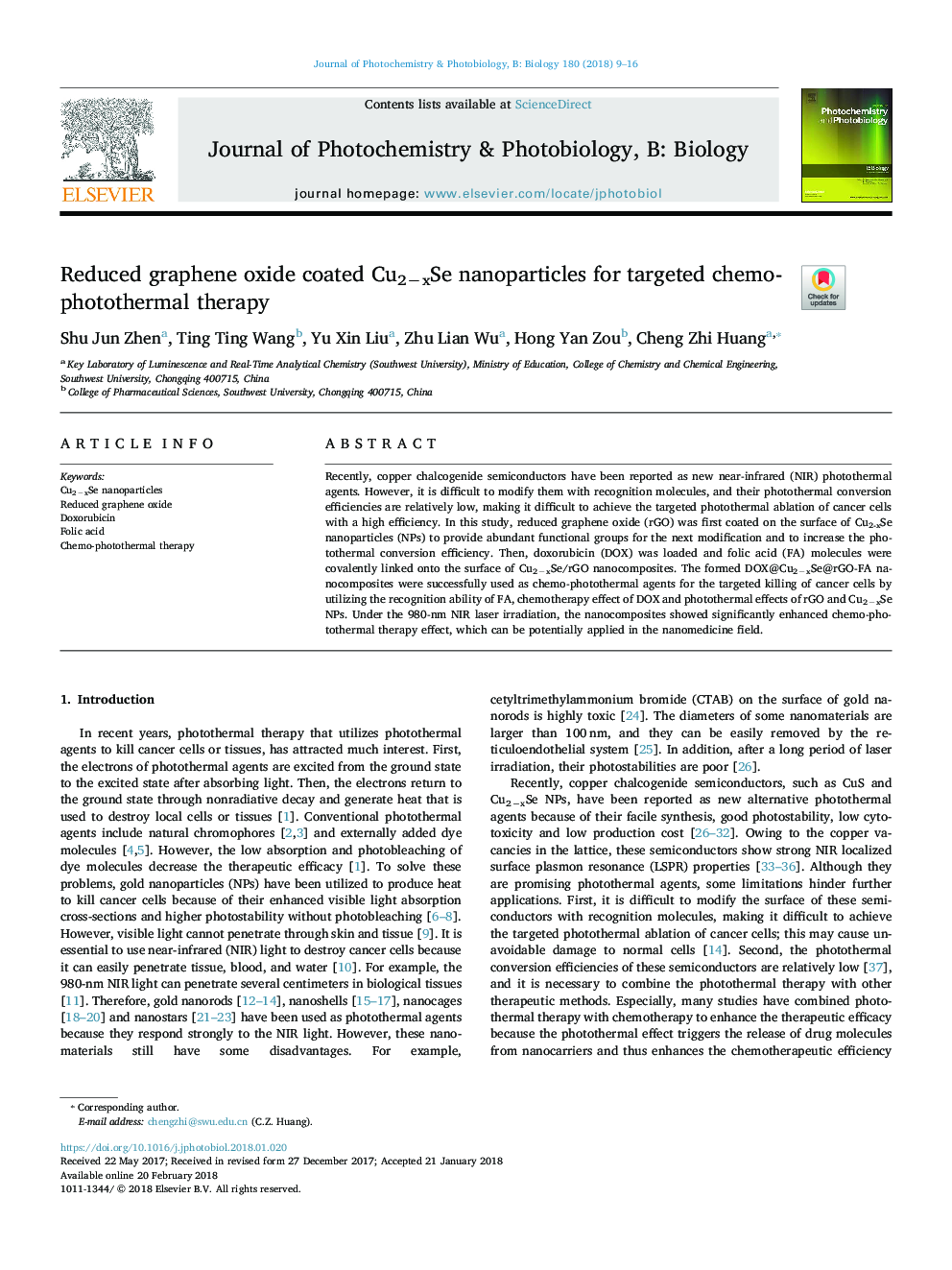| Article ID | Journal | Published Year | Pages | File Type |
|---|---|---|---|---|
| 6493342 | Journal of Photochemistry and Photobiology B: Biology | 2018 | 8 Pages |
Abstract
Recently, copper chalcogenide semiconductors have been reported as new near-infrared (NIR) photothermal agents. However, it is difficult to modify them with recognition molecules, and their photothermal conversion efficiencies are relatively low, making it difficult to achieve the targeted photothermal ablation of cancer cells with a high efficiency. In this study, reduced graphene oxide (rGO) was first coated on the surface of Cu2-xSe nanoparticles (NPs) to provide abundant functional groups for the next modification and to increase the photothermal conversion efficiency. Then, doxorubicin (DOX) was loaded and folic acid (FA) molecules were covalently linked onto the surface of Cu2âxSe/rGO nanocomposites. The formed DOX@Cu2âxSe@rGO-FA nanocomposites were successfully used as chemo-photothermal agents for the targeted killing of cancer cells by utilizing the recognition ability of FA, chemotherapy effect of DOX and photothermal effects of rGO and Cu2âxSe NPs. Under the 980-nm NIR laser irradiation, the nanocomposites showed significantly enhanced chemo-photothermal therapy effect, which can be potentially applied in the nanomedicine field.
Related Topics
Physical Sciences and Engineering
Chemical Engineering
Bioengineering
Authors
Shu Jun Zhen, Ting Ting Wang, Yu Xin Liu, Zhu Lian Wu, Hong Yan Zou, Cheng Zhi Huang,
